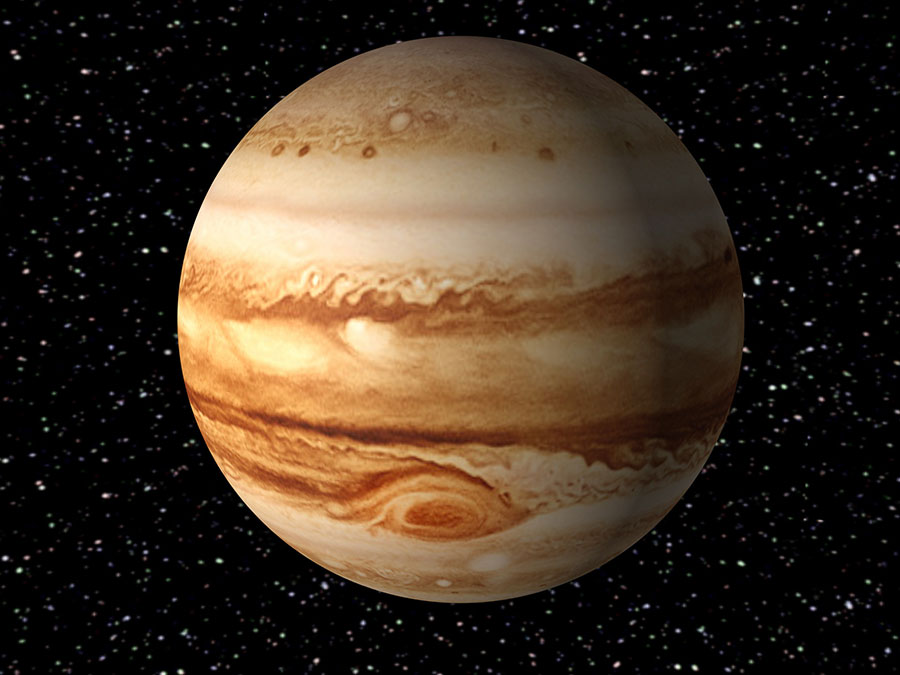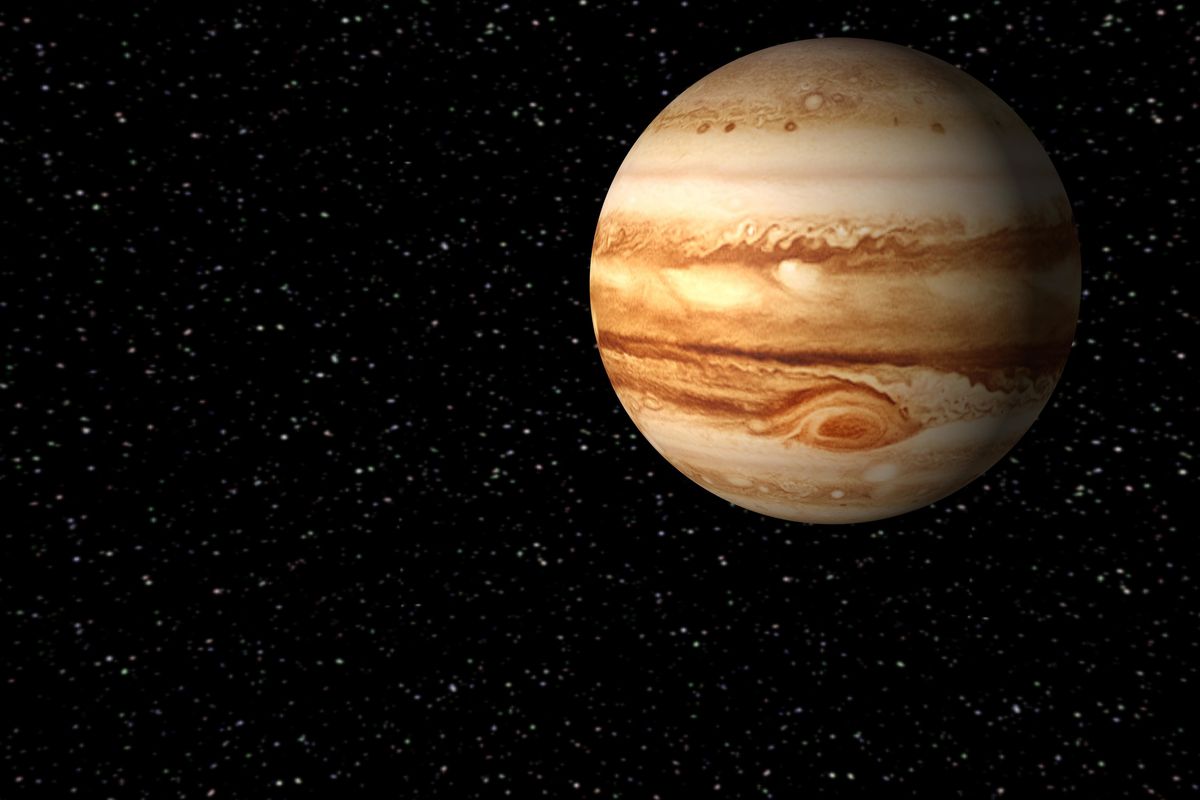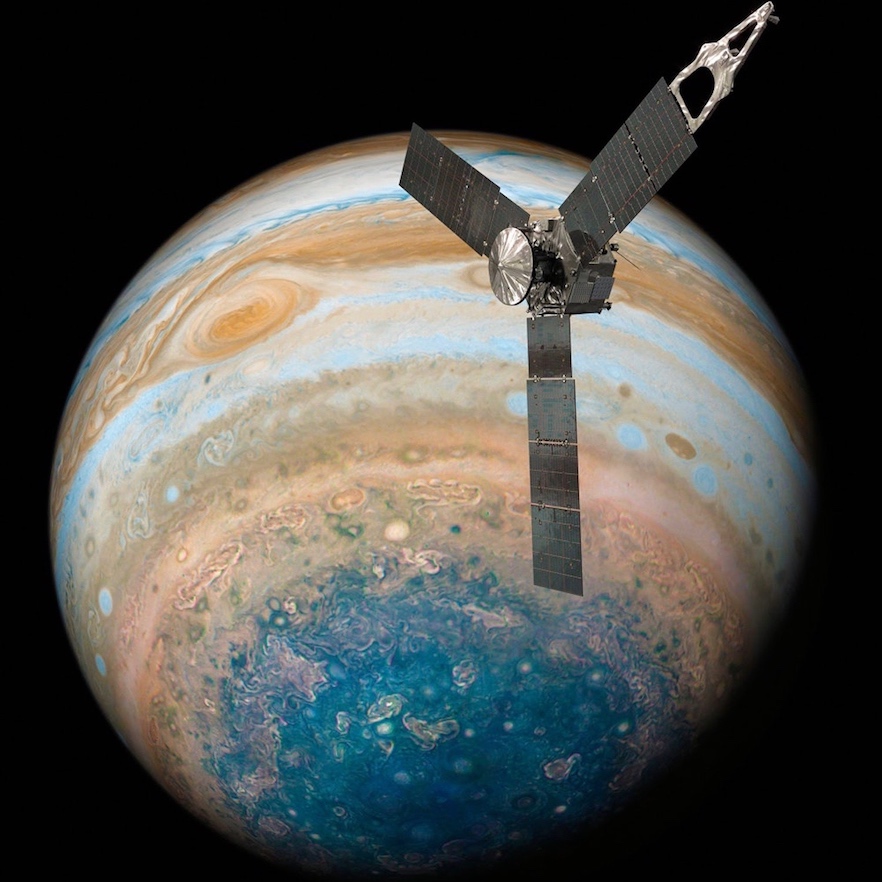Jupiter
Twice as massive as all the other planets combined
Interesting Facts About Jupiter
#. Jupiter’s four largest moons (the Galilean Satellites) are Io, Europa, Ganymede and Callisto.
#. Jupiter is the largest planet in our solar system at nearly 11 times the size of Earth and 317 times its mass.
#. Jupiter, being the biggest planet, gets its name from the king of the ancient Roman gods.
#. Despite its size, Jupiter has the shortest day of any other planet; it only takes about 10 hours for a complete rotation.
#. A lot like the Sun, Jupiter is mostly composed of hydrogen and helium. Jupiter contains the largest ocean in the solar system, an ocean of liquid hydrogen.
Explore in Silence

Jupiter is the fifth planet from our Sun and is, by far, the largest planet in the solar system – more than twice as massive as all the other planets combined. Jupiters stripes and swirls are actually cold, windy clouds of ammonia and water, floating in an atmosphere of hydrogen and helium. Jupiter’s iconic Great Red Spot is a giant storm bigger than Earth that has raged for hundreds of years. Jupiter is surrounded by dozens of moons. Jupiter also has several rings, but unlike the famous rings of Saturn, Jupiter’s rings are very faint and made of dust, not ice.
 Exploration
Exploration Nine spacecraft have studied Jupiter up close. NASA's Juno spacecraft is currently studying the gas giant planet from orbit. The spacecraft, which arrived at Jupiter in July 2016, is the first to study the planet's mysterious, cloud-shrouded interior. Scientists also use the Earth-orbiting Hubble Space Telescope and ground-based telescopes to regularly check in on Jupiter. Pioneer 10 was the first spacecraft to fly past Jupiter. It was followed by Pioneer 11, Voyager 1 and Voyager 2 flybys.
NASA's Galileo mission was first to orbit Jupiter and to send an atmospheric probe into the stormy clouds. The international Ulysses mission used Jupiter's powerful gravity to hurl itself into orbital passes of the Sun's northern and southern poles. Both Cassini and New Horizons studied Jupiter as they hurtled on to their main science targets — Saturn for Cassini and Pluto and the Kuiper Belt for New Horizons. Two new missions are in the works to make close studies of Jupiter's moons NASA's Europa Clipper and ESA's JUpiter ICy Moons Explorer (JUICE). Jupiter holds a unique place in the history of space exploration. In 1610, astronomer Galileo Galilei used a new invention called the telescope to look at Jupiter and discovered the first moons known to exist beyond Earth. The discovery ended incorrect, ancient belief that everything, including the Sun and other planets, orbited the Earth.
 Size and Distance
Size and Distance With a radius of 43,440.7 miles (69,911 kilometers), Jupiter is 11 times wider than Earth. If Earth were the size of a nickel, Jupiter would be about as big as a basketball. From an average distance of 484 million miles (778 million kilometers), Jupiter is 5.2 astronomical units away from the Sun. One astronomical unit (abbreviated as AU), is the distance from the Sun to Earth. From this distance, it takes Sunlight 43 minutes to travel from the Sun to Jupiter.
 Orbit and Rotation
Orbit and Rotation Jupiter has the shortest day in the solar system. One day on Jupiter takes only about 10 hours (the time it takes for Jupiter to rotate or spin around once), and Jupiter makes a complete orbit around the Sun (a year in Jovian time) in about 12 Earth years (4,333 Earth days). Its equator is tilted with respect to its orbital path around the Sun by just 3 degrees.
This means Jupiter spins nearly upright and does not have seasons as extreme as other planets do.
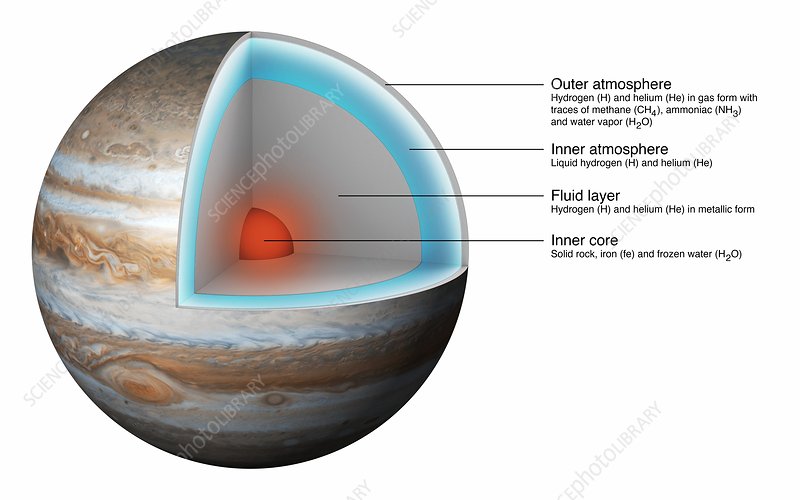 Structure
Structure The composition of Jupiter is similar to that of the Sun—mostly hydrogen and helium. Deep in the atmosphere, pressure and temperature increase, compressing the hydrogen gas into a liquid.
This gives Jupiter the largest ocean in the solar system—an ocean made of hydrogen instead of water. Scientists think that, at depths perhaps halfway to the planet's center, the pressure becomes so great that electrons are squeezed off the hydrogen atoms, making the liquid electrically conducting like metal. Jupiter's fast rotation is thought to drive electrical currents in this region, generating the planet's powerful magnetic field. It is still unclear if, deeper down, Jupiter has a central core of solid material or if it may be a thick, super-hot and dense soup. It could be up to 90,032 degrees Fahrenheit (50,000 degrees Celsius) down there, made mostly of iron and silicate minerals (similar to quartz).
 Formation
Formation As a gas giant, Jupiter doesn’t have a true surface. The planet is mostly swirling gases and liquids. While a spacecraft would have nowhere to land on Jupiter, it wouldn’t be able to fly through unscathed either.
The extreme pressures and temperatures deep inside the planet crush, melt and vaporize spacecraft trying to fly into the planet.
 Surface
Surface The Global Positioning System (GPS), originally Navstar GPS (stylized in capital letters in its logo), is a satellite-based radionavigation system owned by the United States government and operated by the United States Space Force. It is one of the global navigation satellite systems (GNSS) that provides geolocation and time information to a GPS receiver anywhere on or near the Earth.
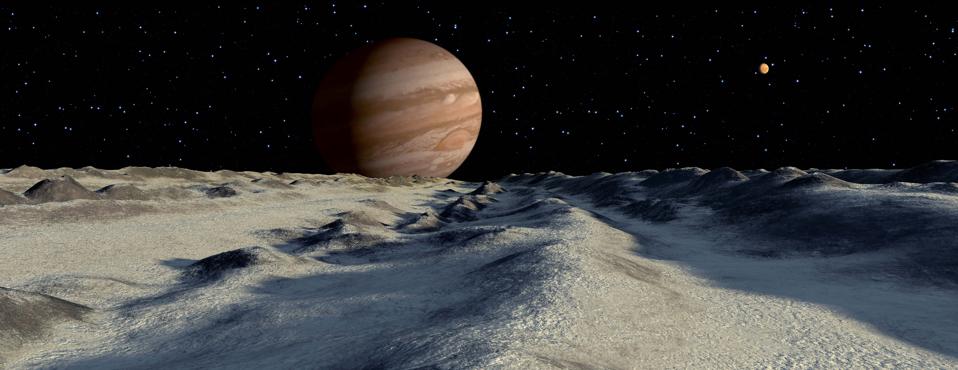 Atmosphere
Atmosphere Jupiters appearance is a tapestry of colorful cloud bands and spots. The gas planet likely has three distinct cloud layers in its "skies" that, taken together, span about 44 miles (71 kilometers). The top cloud is probably made of ammonia ice, while the middle layer is likely made of ammonium hydrosulfide crystals. The innermost layer may be made of water ice and vapor. The vivid colors you see in thick bands across Jupiter may be plumes of sulfur and phosphorus-containing gases rising from the planet's warmer interior. Jupiter's fast rotation—spinning once every 10 hours—creates strong jet streams, separating its clouds into dark belts and bright zones across long stretches. With no solid surface to slow them down,
Jupiters spots can persist for many years. Stormy Jupiter is swept by over a dozen prevailing winds, some reaching up to 335 miles per hour (539 kilometers per hour) at the equator. The Great Red Spot, a swirling oval of clouds twice as wide as Earth, has been observed on the giant planet for more than 300 years. More recently, three smaller ovals merged to form the Little Red Spot, about half the size of its larger cousin. Scientists do not yet know if these ovals and planet-circling bands are shallow or deeply rooted to the interior.
 Moons
Moons
With four large moons and many smaller moons, Jupiter forms a kind of miniature solar system. Jupiter has 53 confirmed moons and 26 provisional moons awaiting confirmation of discovery. Moons are named after they are confirmed. Jupiter's four largest moons—Io, Europa, Ganymede and Callisto—were first observed by the astronomer Galileo Galilei in 1610 using an early version of the telescope.
These four moons are known today as the Galilean satellites, and they're some of the most fascinating destinations in our solar system. Io is the most volcanically active body in the solar system. Ganymede is the largest moon in the solar system (even bigger than the planet Mercury). Callisto’s very few small craters indicate a small degree of current surface activity. A liquid-water ocean with the ingredients for life may lie beneath the frozen crust of Europa, making it a tempting place to explore.

